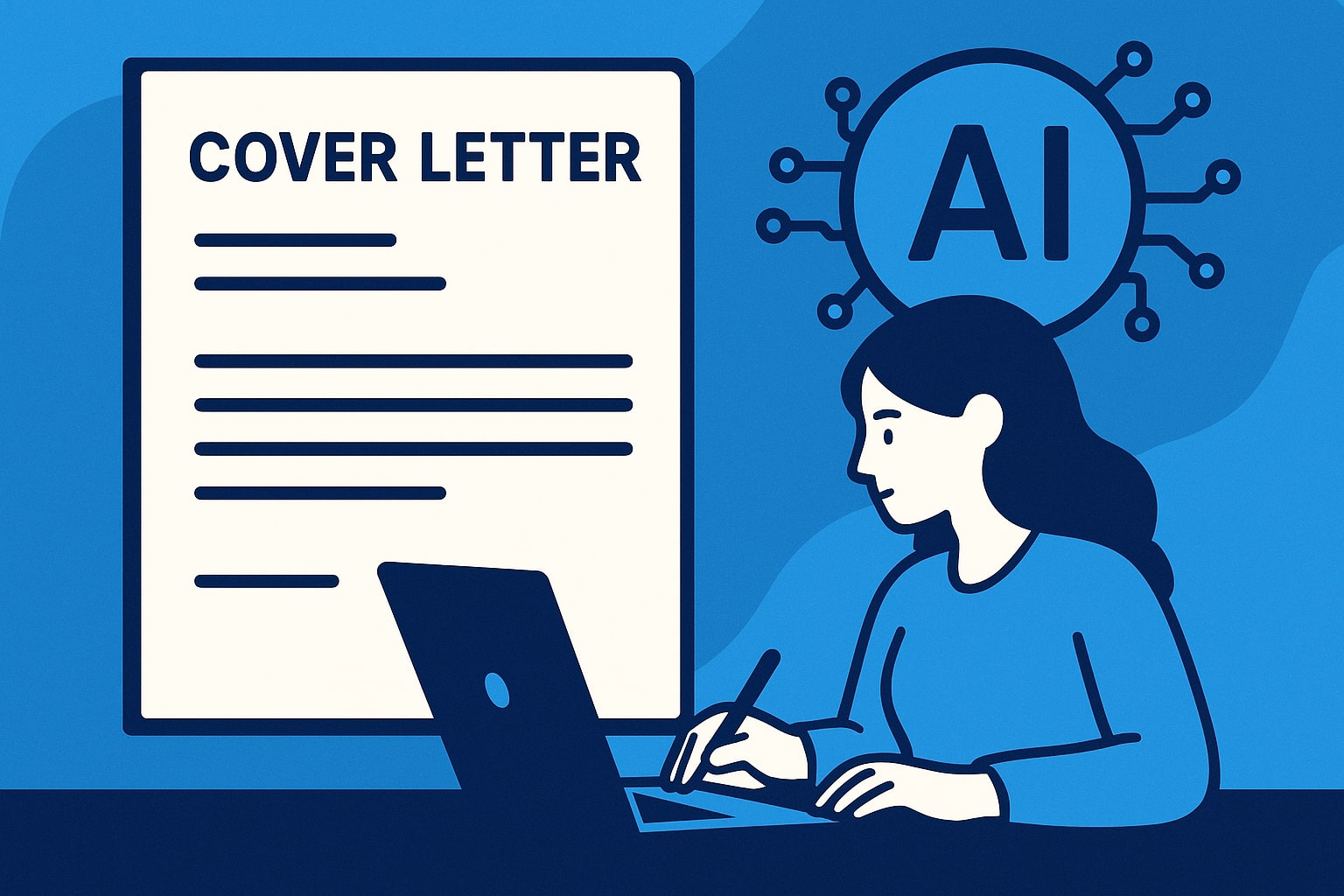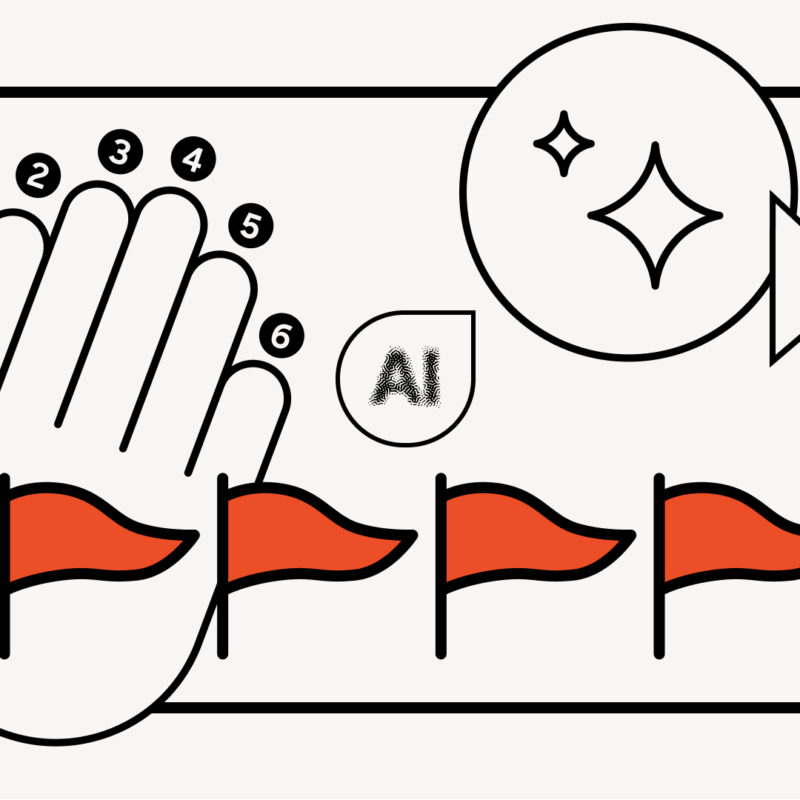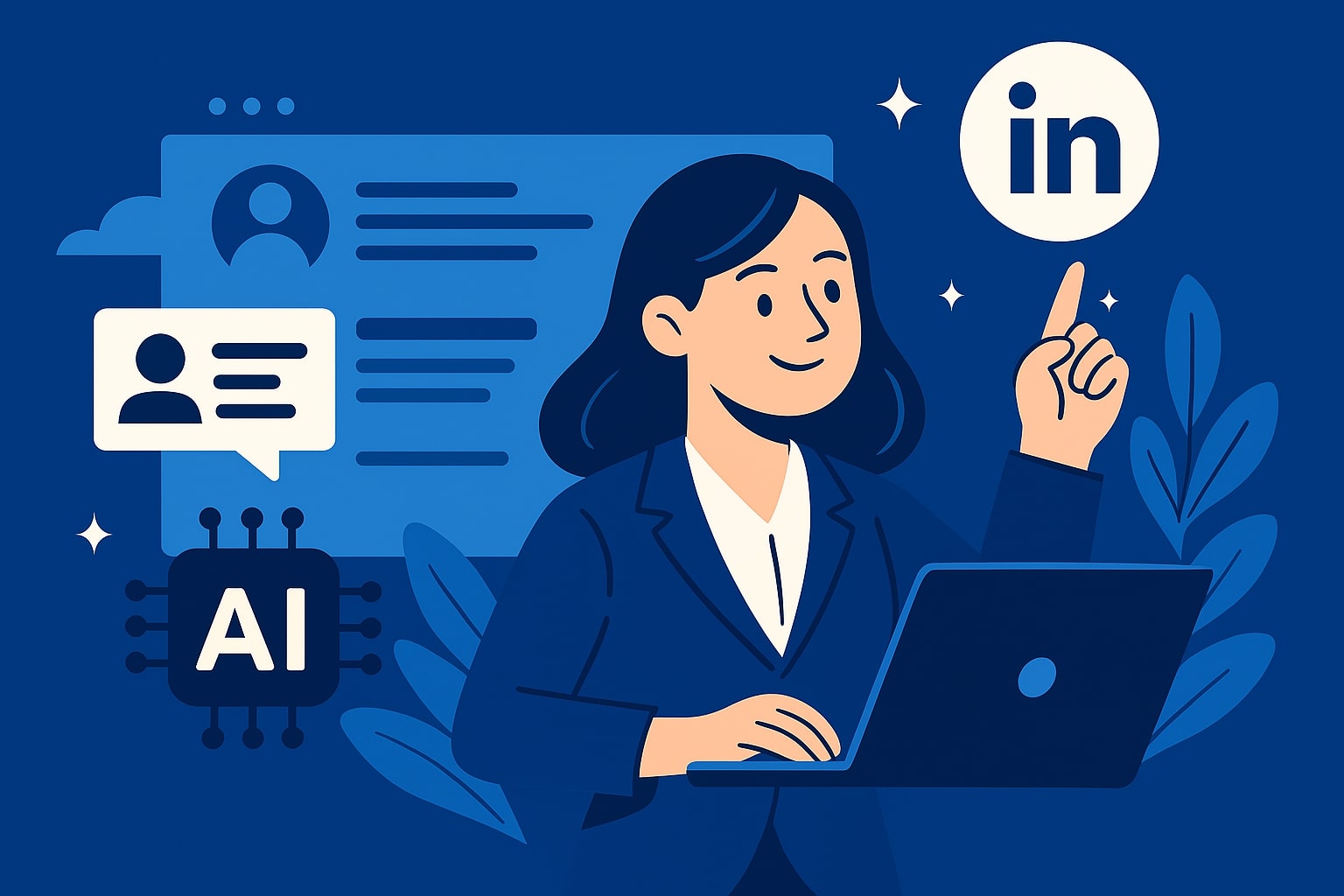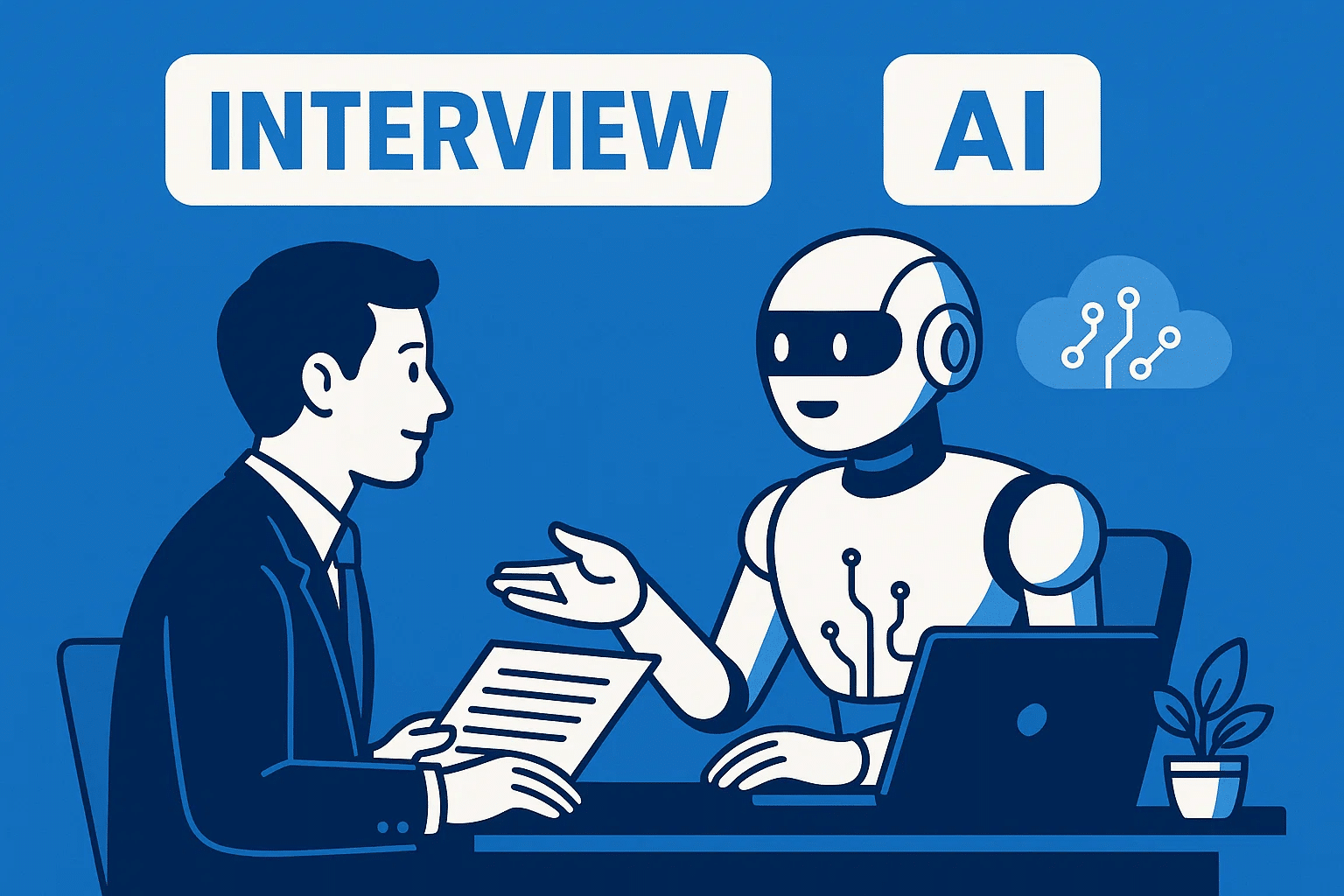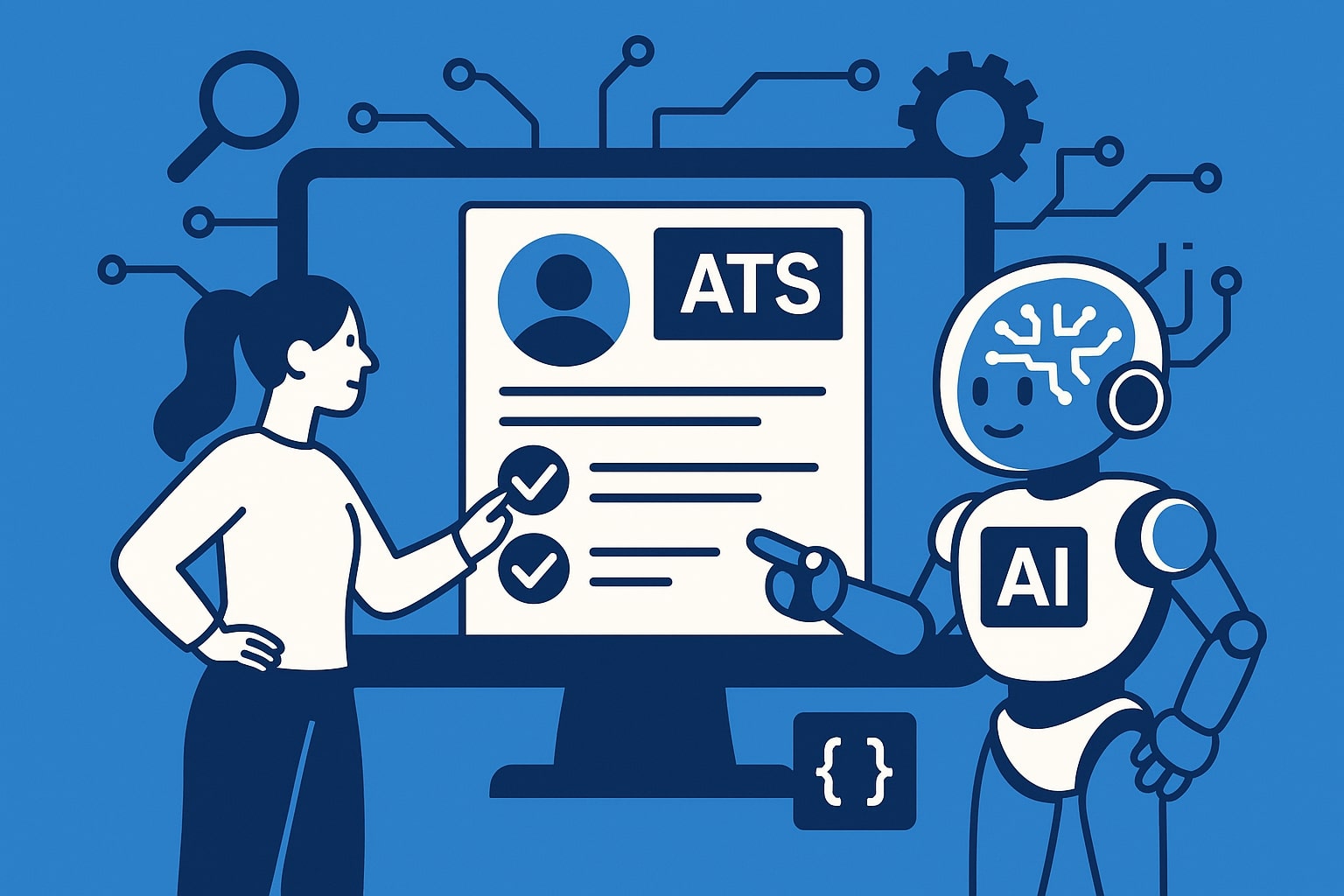The job market has evolved dramatically, and so have the tools at your disposal. AI-powered writing assistants are revolutionizing how professionals approach cover letter creation, offering unprecedented personalization and efficiency. Yet many job seekers struggle to harness this technology effectively, often producing generic, robotic-sounding letters that fail to capture their unique value proposition.
This comprehensive guide will transform your approach to cover letter writing using AI tools. You’ll discover proven strategies to create compelling, personalized cover letters that bypass applicant tracking systems and resonate with hiring managers. Whether you’re a recent graduate, career changer, or seasoned professional, these techniques will help you leverage AI to showcase your authentic professional story.
1. Understanding AI-Powered Cover Letter Writing
Artificial intelligence has fundamentally changed the cover letter landscape. Modern AI tools can analyze job descriptions, identify key requirements, and suggest relevant experiences from your background. However, the magic lies not in automation alone, but in the strategic collaboration between human insight and machine efficiency.
AI cover letter tools operate on sophisticated language models trained on millions of professional documents. They understand industry-specific terminology, recognize successful writing patterns, and can adapt tone and style to match different company cultures. The key advantage? Speed and personalization at scale without sacrificing quality.
- Time Efficiency. AI reduces cover letter writing time from 2-3 hours to 30-45 minutes while maintaining professional quality.
- Personalization Power. Advanced AI can analyze job postings and company information to create highly targeted content that speaks directly to employer needs.
- Language Optimization. AI tools suggest industry-appropriate terminology and help eliminate common writing mistakes that could hurt your application.
- ATS Compatibility. Modern AI understands applicant tracking system requirements and can optimize your cover letter for better parsing and keyword matching.
The most successful professionals understand that AI is a powerful collaborator, not a replacement for authentic storytelling. Your unique experiences, achievements, and personality traits remain the cornerstone of an effective cover letter. AI simply helps you present these elements more strategically and persuasively.
The Psychology Behind AI-Enhanced Applications
Hiring managers receive hundreds of applications for each position. Research from LinkedIn shows that 75% of resumes never reach human eyes due to ATS filtering. AI-written cover letters, when crafted properly, can significantly improve your chances of passing these initial screening stages.
The human brain processes information differently than algorithms. While ATS systems scan for keywords and formatting, human reviewers look for authentic connection and value alignment. Your AI-enhanced cover letter must satisfy both audiences simultaneously, creating a document that’s technically optimized yet emotionally engaging.

2. Choosing the Right AI Tools for Cover Letter Creation
The AI writing tool landscape offers numerous options, each with distinct strengths and limitations. Understanding these differences will help you select the platform that best aligns with your career goals and writing style preferences.
- 89% of professionals report improved application response rates when using AI writing tools
- 76% of recruiters can identify generic, non-personalized cover letters within the first paragraph
- 63% of hiring managers spend less than 30 seconds reviewing each cover letter initially
- 54% of successful applicants customize their cover letters using data-driven insights
- 48% of job seekers struggle with writer’s block when creating cover letters from scratch
Popular AI Writing Platforms for Cover Letters
ChatGPT and Claude excel at conversational, iterative cover letter development. These platforms allow you to refine your message through multiple rounds of feedback and revision. They’re particularly effective for professionals who prefer a collaborative writing process and want to maintain strong editorial control.
Specialized career platforms like Resume Genius and Zety offer industry-specific templates and automated customization features. These tools are ideal for job seekers who need to create multiple cover letters quickly while ensuring consistent professional formatting and ATS optimization.
| AI Tool Type | Best For | Key Advantages |
|---|---|---|
| General AI (ChatGPT, Claude) | Creative professionals, executives | Highly customizable, conversational interface |
| Career-specific platforms | Entry-level, high-volume applications | Industry templates, ATS optimization |
| Integrated resume builders | Career changers, students | Consistent branding across documents |
| Grammar and style tools | Non-native speakers, perfectionists | Language refinement, tone adjustment |
Evaluating AI Tool Effectiveness
The most effective AI tools for cover letter writing share several characteristics. They offer contextual understanding of your industry, provide specific suggestions rather than generic templates, and allow for iterative refinement based on your feedback.
Look for platforms that can analyze job descriptions and extract key requirements automatically. The best tools will identify not just explicit qualifications but also cultural cues and company values embedded in the job posting language. This deeper analysis enables more sophisticated personalization strategies.
3. Crafting Compelling Prompts for AI Cover Letter Generation
The quality of your AI-generated cover letter depends heavily on the prompts you provide. Strategic prompt engineering is the difference between generic output and compelling, personalized content that captures your unique professional narrative.
Effective prompts contain three essential components: context about your background, specific details about the target role, and clear instructions about tone and style preferences. The more detailed and structured your input, the more tailored and effective your AI-generated cover letter will be.

“I’m a marketing professional with 5 years of experience in B2B SaaS companies, specializing in content marketing and lead generation. I’m applying for a Senior Marketing Manager role at [Company Name], which requires experience in marketing automation, team leadership, and campaign optimization. The company values innovation, data-driven decisions, and collaborative culture. Please write a compelling cover letter that highlights my relevant experience while demonstrating enthusiasm for their mission. Use a professional yet approachable tone, and include specific metrics from my achievements.”
Advanced Prompt Strategies
Sophisticated prompt engineering goes beyond basic information sharing. Include details about your career progression story, specific challenges you’ve overcome, and quantifiable achievements that demonstrate your impact. This context helps AI understand not just what you’ve done, but how you think and approach problems.
Consider incorporating industry-specific terminology and current trends relevant to your target role. For example, if you’re applying for a digital marketing position, mention your experience with emerging platforms, privacy regulations, or attribution modeling challenges. This demonstrates current industry awareness and helps the AI generate more sophisticated content.
Multi-stage prompting can yield even better results. Start with a broad request, review the output, then provide specific feedback for refinement. You might ask the AI to “make the opening more engaging,” “strengthen the value proposition,” or “better connect my experience to the company’s specific needs.”
Industry-Specific Prompt Modifications
Different industries have distinct communication styles and priorities. Technology companies often value innovation, scalability, and technical problem-solving skills. Your prompts should emphasize these aspects and use terminology that resonates with tech-savvy hiring managers.
Healthcare organizations prioritize patient care, compliance, and evidence-based decision making. Frame your prompts to highlight relevant experience in these areas, using language that demonstrates understanding of healthcare challenges and regulations.
Financial services firms look for analytical skills, risk management experience, and regulatory compliance knowledge. Your prompts should emphasize quantitative achievements and demonstrate understanding of financial markets or regulatory environments.
4. Personalizing AI-Generated Content for Maximum Impact
Raw AI output, no matter how sophisticated, requires human refinement to achieve maximum impact. The personalization process transforms generic content into a compelling narrative that authentically represents your professional journey and aspirations.
Start by analyzing the AI-generated draft for authenticity markers. Does the language sound like something you would naturally write? Are the examples and achievements accurately represented? The goal is to maintain your unique voice while leveraging AI’s structural and stylistic suggestions.
- ✓ Add specific metrics and quantifiable achievements from your actual experience
- ✓ Include industry-specific terminology and current trends relevant to your field
- ✓ Incorporate company-specific details that show genuine research and interest
- ✓ Adjust tone and style to match the company’s communication preferences
- ✓ Strengthen transitions between paragraphs for better narrative flow
- ✓ Ensure opening and closing paragraphs create strong first and last impressions
Research-Driven Personalization Techniques
Effective personalization requires thorough research about your target company and role. Visit the company’s website, read recent press releases, and understand their current challenges and opportunities. This information helps you position your experience as directly relevant to their needs.
LinkedIn research can reveal valuable insights about the hiring manager, team dynamics, and company culture. Look for shared connections, mutual interests, or common experiences that could create natural conversation starters. Company research strategies can significantly improve your cover letter’s effectiveness.
Industry publications and trade magazines offer context about current trends and challenges. Referencing these topics in your cover letter demonstrates thought leadership and shows you’re actively engaged with industry developments beyond your immediate role.
Storytelling Elements That Enhance AI Content
The most memorable cover letters tell compelling stories about professional growth and achievement. AI excels at structure and formatting, but human storytelling creates emotional connection. Identify 2-3 key experiences that showcase your problem-solving abilities and professional evolution.
Use the STAR method (Situation, Task, Action, Result) to structure these stories within your cover letter framework. This approach provides concrete evidence of your capabilities while creating narrative flow that keeps readers engaged. Quantifiable results are particularly powerful in demonstrating your impact.
5. Optimizing Cover Letters for Applicant Tracking Systems (ATS)
Modern recruitment processes rely heavily on applicant tracking systems to filter and rank applications. Your AI-generated cover letter must be optimized for both algorithmic parsing and human readability to maximize your chances of reaching the interview stage.
ATS optimization involves strategic keyword integration, proper formatting, and content structure that machines can easily interpret. However, over-optimization can make your letter sound robotic and unnatural to human readers. The challenge lies in finding the perfect balance between technical optimization and authentic communication.
| ATS Element | Optimization Strategy | Human Impact |
|---|---|---|
| Keywords | Natural integration throughout content | Demonstrates relevant experience |
| File Format | PDF or Word document | Professional presentation |
| Font Choice | Standard fonts (Arial, Calibri) | Easy readability |
| Section Headers | Clear, descriptive headings | Logical content organization |
| Contact Info | Standard placement and format | Easy to find and contact |
Keyword Strategy for ATS Success
Effective keyword strategy goes beyond simple word matching. Modern ATS platforms use semantic analysis to understand context and meaning. This means using synonyms, related terms, and conceptually similar phrases can be just as valuable as exact keyword matches.
Analyze the job posting carefully to identify both explicit and implicit requirements. Look for patterns in language, repeated concepts, and industry-specific terminology. ATS optimization best practices suggest using variations of key terms throughout your cover letter to improve matching scores.
Don’t ignore soft skills and cultural keywords. Many job postings include terms like “collaborative,” “innovative,” or “results-driven.” These descriptors can be powerful differentiators when integrated naturally into your cover letter narrative.
Technical Formatting Best Practices
ATS systems have specific requirements for parsing content effectively. Use standard section headers and avoid complex formatting that might confuse parsing algorithms. Simple, clean layouts with clear hierarchy perform better than visually complex designs.
Bullet points can improve readability for both ATS and human reviewers, but use them sparingly in cover letters. The narrative flow of paragraph-based content often creates stronger emotional connection while still providing the structured information that ATS systems need.
6. Common Mistakes to Avoid When Using AI for Cover Letters
Even sophisticated AI tools can produce suboptimal results when used incorrectly. Understanding common pitfalls helps you avoid career-damaging mistakes and ensures your AI-enhanced cover letters represent your best professional self.
The most frequent error is over-reliance on AI output without sufficient human review and personalization. AI-generated content, while impressive, often lacks the nuanced understanding of your specific career context and the subtle cultural cues that make cover letters truly compelling.
- Generic Output Acceptance. Using AI-generated content without customization creates bland, forgettable cover letters that fail to differentiate you from other candidates.
- Keyword Stuffing. Overloading your cover letter with keywords makes it sound robotic and can actually hurt your ATS scores through density penalties.
- Factual Inaccuracies. AI tools sometimes generate plausible-sounding but incorrect information about companies or roles that can embarrass you during interviews.
- Tone Mismatches. Failing to adjust AI-generated tone to match company culture can create disconnect between your letter and employer expectations.
Quality Control Strategies
Implement a systematic review process for all AI-generated content. Read your cover letter aloud to identify awkward phrasing or unnatural transitions. Professional authenticity should never be sacrificed for efficiency or convenience.
Fact-check all company information and role requirements mentioned in your cover letter. AI tools can hallucinate details or provide outdated information. Always verify specific company details, recent news, or industry trends referenced in your letter through reliable company research sources such as Glassdoor.
Consider asking trusted colleagues or mentors to review your AI-enhanced cover letters. Fresh perspectives can identify issues you might miss and provide valuable feedback on messaging effectiveness and authenticity.
Avoiding AI Detection Red Flags
Some hiring managers and ATS systems are developing capabilities to identify AI-generated content. While there’s nothing inherently wrong with using AI assistance, you want to ensure your final product sounds authentically human and personally crafted.
Vary your sentence structure and length to create natural rhythm. Add personal anecdotes and specific details that only you would know. Use conversational transitions and industry-specific insights that demonstrate genuine expertise and engagement.
7. Industry-Specific AI Cover Letter Strategies
Different industries have distinct communication styles, priorities, and cultural norms that should influence your AI cover letter approach. Understanding these nuances helps you create more targeted and effective applications that resonate with industry-specific hiring managers.
Technology sector cover letters should emphasize innovation, technical problem-solving, and scalability. Use terminology that demonstrates familiarity with current tech trends, development methodologies, and digital transformation challenges. AI tools can help you incorporate relevant buzzwords naturally while maintaining readability.

“I’m a senior software engineer with 7 years of experience in full-stack development, specializing in React, Node.js, and cloud architecture. I’m applying for a Technical Lead position at [Company], which requires experience in system design, team mentorship, and agile development. The company is scaling rapidly and values innovation, technical excellence, and collaborative leadership. Write a cover letter that demonstrates my technical depth, leadership capabilities, and alignment with their growth trajectory. Include specific examples of system optimizations and team achievements. Use industry-appropriate terminology while maintaining approachability.”
Healthcare and Life Sciences Applications
Healthcare organizations prioritize patient outcomes, regulatory compliance, and evidence-based practices. Your AI-generated cover letter should emphasize experience with healthcare regulations, quality improvement initiatives, and patient-centered care approaches.
Include terminology related to HIPAA compliance, quality metrics, and interdisciplinary collaboration. Healthcare hiring managers look for professionals who understand the regulatory environment and can navigate complex organizational structures while maintaining focus on patient care excellence.
Financial Services Considerations
Financial services firms value analytical rigor, risk management expertise, and regulatory knowledge. Your cover letter should demonstrate quantitative skills, experience with financial regulations, and understanding of market dynamics.
Use specific financial terminology and reference relevant regulations or compliance frameworks. Highlight experience with data analysis, risk assessment, or client relationship management. Financial services career experts recommend emphasizing both technical competence and client service orientation.
8. Measuring and Improving Your AI-Enhanced Cover Letters
Continuous improvement is essential for maximizing the effectiveness of your AI-enhanced cover letters. Tracking key metrics and gathering feedback helps you refine your approach and achieve better results over time.
Response rates are the primary indicator of cover letter effectiveness. Track how many applications result in phone screens or interviews compared to your previous non-AI approach. Industry benchmarks suggest that well-crafted, personalized cover letters should generate response rates between 10-15% for qualified candidates.
| Metric | Benchmark Range | Improvement Actions |
|---|---|---|
| Response Rate | 10-15% | Enhance personalization and company research |
| Interview Conversion | 25-40% | Strengthen value proposition and storytelling |
| Time to Response | 5-10 business days | Apply to more targeted, relevant positions |
| Second Round Rate | 60-75% | Better align experience with role requirements |
A/B Testing Your Cover Letter Approaches
Systematic testing can reveal which AI strategies work best for your industry and career level. Try different opening paragraphs, storytelling approaches, and closing statements across similar applications to identify the most effective elements.
Document which prompts generate the strongest AI output and which personalization techniques yield the best results. Over time, you’ll develop a refined process that consistently produces high-quality cover letters tailored to your specific career goals.
Consider testing different AI tools and approaches for similar roles. Some professionals find that combination strategies work best, using one AI tool for initial drafts and another for refinement and optimization.
Feedback Integration and Iteration
When you do receive feedback from interviews or networking conversations, use this information to improve your cover letter approach. Hiring managers often provide insights about what resonated with them or what they would have liked to see differently.
Professional associations and career services organizations can provide valuable feedback on your AI-enhanced cover letters. Many offer resume and cover letter review services that can identify areas for improvement and suggest industry-specific enhancements.
Summary
AI-powered cover letter writing represents a significant evolution in job application strategy. By combining artificial intelligence capabilities with human insight and personalization, you can create compelling, targeted cover letters that stand out in competitive job markets.
The key to success lies in strategic collaboration with AI tools rather than passive reliance on automated output. Your unique professional story, industry expertise, and career aspirations remain the foundation of effective cover letters. AI simply helps you present these elements more persuasively and efficiently.
Remember that technology is constantly evolving, and your approach should evolve with it. Stay current with new AI tools and features, continue refining your prompt engineering skills, and always prioritize authenticity and personalization in your final output. The professionals who master this balance will have significant advantages in today’s competitive job market.
Preguntas Frecuentes
Can hiring managers tell if I used AI to write my cover letter?
Sophisticated AI-generated content that has been properly personalized and reviewed is generally indistinguishable from human-written text. The key is adding authentic personal details, industry-specific insights, and natural language patterns that reflect your communication style. Focus on using AI as a starting point rather than a final product.
Should I mention that I used AI assistance in my cover letter?
There’s no need to disclose AI usage in your cover letter. Many professionals use various tools for writing assistance, including grammar checkers, templates, and editing software. The important thing is that the final content authentically represents your qualifications and interest in the position.
How long should an AI-generated cover letter be?
Aim for 3-4 paragraphs or approximately 250-400 words. This length allows you to provide sufficient detail about your qualifications while respecting hiring managers’ limited time. AI tools can help you achieve optimal length by suggesting concise ways to express your key points.
What information should I never include in AI prompts?
Avoid sharing sensitive personal information like social security numbers, private financial details, or confidential company information. Focus your prompts on professional achievements, public company information, and general industry knowledge that’s already available publicly.
How often should I update my AI cover letter prompts?
Review and update your prompts every 3-6 months or whenever you gain significant new experience, change career directions, or target different industries. Your prompts should evolve with your professional development to ensure AI generates increasingly relevant and compelling content.
Can AI help with cover letters for career changes?
AI excels at identifying transferable skills and helping articulate how seemingly unrelated experience applies to new roles. Provide detailed context about your career transition goals and the specific skills you want to highlight. AI can suggest compelling ways to frame your diverse background as an asset.
What’s the biggest mistake people make with AI cover letters?
The most common error is using generic AI output without sufficient personalization. Successful candidates always customize AI-generated content with specific company research, industry insights, and personal anecdotes that demonstrate genuine interest and relevant experience.
How do I ensure my AI cover letter passes ATS screening?
Focus on natural keyword integration, use standard formatting, and include relevant industry terminology from the job posting. AI tools can suggest appropriate keywords, but always prioritize readability and natural language flow over keyword density.
Are there industries where AI cover letters don’t work well?
AI cover letters can be effective across all industries when properly customized. However, highly creative fields like advertising or personal services may require more extensive personalization to showcase unique creative vision or interpersonal skills that AI might not capture effectively.
How do I measure if my AI cover letter strategy is working?
Track your application response rates, interview conversion rates, and time to hear back from employers. Compare these metrics to your previous approach to gauge improvement. Aim for response rates of 10-15% and continuously refine your strategy based on results and feedback.

